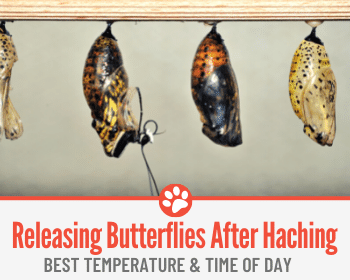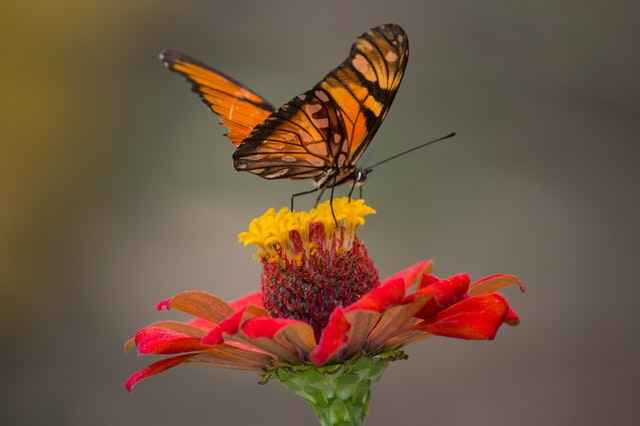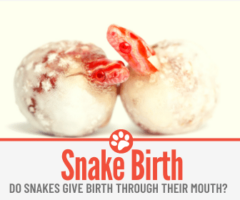 The emergence of a butterfly from its chrysalis is a magical moment in its complex life cycle.
The emergence of a butterfly from its chrysalis is a magical moment in its complex life cycle.
After the incredible transformation it has undergone inside its cocoon, a butterfly needs a moment to adjust to its new life.
If we are privileged to be a part of this process, then it is important to know how to help a butterfly begin its new life.
In This article, we will see all about how to Release butterflies after hatching & When is the best time to do it.
When to release butterflies after hatching
Butterflies need at least a few hours to rest and prepare before they can fly away to start their adult lives. Besides rest time, there are other factors to consider, such as temperature, feeding, and time of year.
How long after a butterfly hatches can it fly?
Butterflies cannot fly immediately after leaving the chrysalis. They need at least an hour, if not more, to prepare their new wings for flight. When butterflies first emerge, their wings are soft, wet, and crumpled. The butterfly conditions their wings for flight in unique stages.
First of all, they have to hang upside down for their wings to straighten out. Butterflies need an hour or more for their wings to dry and harden into the permanent form that is necessary for flight. Even after the wings have become usable, they will continue to harden over the following hours.
Once the wings have taken the right shape for flight, the butterfly needs to circulate blood through them by pumping the wings several times.
When a butterfly does this, it is almost ready to fly.
Releasing Monarch butterflies
Monarchs are among the most well-known of all butterflies. We recognize them immediately for their orange wings with black vein-lines and edges, bordered by white spots. Most butterfly research appears to be based on the lives and habits of monarch butterflies.
A remarkable aspect of their lives is that Monarch butterflies migrate to escape cold weather and also return in more favorable temperatures.
Monarchs will migrate far enough to reach a more comfortable climate, where they will hibernate to conserve their energy over the cold months.
What to do when a monarch butterfly emerges?
Emergence will occur after approximately 10 days of pupation. When your monarch butterfly emerges, give it the time it needs to rest its wings. If you intend to release them into the wild, it is a good idea to expose monarchs to natural light and temperatures soon after they hatch.
Research has shown that the monarch butterflies’ ability to migrate, which is important for survival in the wild, can be badly affected when they are reared in captivity.
This depends on the temperatures that monarch butterflies experience in the first few days of their adult lives.
Keeping new butterflies in a controlled, artificial environment may not prepare them for life in the wild. Butterflies do not need to eat immediately after emerging from their cocoon.
How long after a monarch hatches can it fly?
The monarch butterfly will be ready to take off after several hours of rest for its wings.
When to and how to release monarch butterflies after hatching
Monarch butterflies emerge at different times of the year. If they come out at the start of cold weather, they will need to be ready to migrate.
Monarch butterflies should be released soon after they are ready to fly so that they can develop the skills they need for survival. See the section of this article titled General tips for releasing any type of butterfly for more information.
Releasing swallowtail butterflies
The group named swallowtail butterflies is diverse and includes several types of butterflies. Many of these share a distinctive fork in their hindwings, which is the reasoning behind their name.
What to do when a swallowtail butterfly emerges?
A swallowtail will emerge after anywhere from a few weeks to a few months inside the chrysalis. It is recommended to wait at least a few hours or a day before feeding the new butterfly.
Most swallowtails typically emerge over spring and summer, and sometimes in early autumn. These adult swallowtails reproduce and die before winter, while the next generation overwinters in its chrysalis form until spring comes again.
How long after a swallowtail butterfly hatches can it fly?
When the swallowtail butterfly appears, it will need time to hang upside down and prepare its wings for flight for a few hours.
When to and how to release swallowtail butterflies after hatching
Emerging in spring gives most varieties of swallowtails good temperatures for release soon after hatching. For more information to help with releasing swallowtails, please go to the section of this article titled General tips for releasing any type of butterfly.
Releasing painted lady butterflies
These butterflies also go by the name of cosmopolitan or Vanessa Cardui butterflies. These butterflies are mostly tropical, which means they need to live in a temperate climate.
They migrate like monarchs, except that painted ladies move in huge groups, and they migrate continuously instead of finding a place to hibernate.
These butterflies travel great distances and cross continents to find warm weather. Painted ladies are very adaptable and have varied diets, which allows them to travel very effectively.
What to do when a painted lady butterfly emerges?
Allow Painted lady butterflies to rest for a few hours before release them. It is also recommended that they not be fed immediately after emerging. They can be offered food from several hours to a day old.
How long after a painted lady butterfly hatches can it fly?
A painted lady butterfly needs a few hours to prepare its wings before it is ready for flight.
When to and how to release painted lady butterflies after hatching
Although there is less research available on painted ladies than there is on monarchs, it stands to reason that painted ladies should also be exposed to natural temperatures soon after emerging.
We have seen monarchs, another type of migratory butterfly, need exposure to natural conditions in their first days of adult life. There seems to be less research available on painted ladies, although we may assume that they also need to learn about their natural environment very soon after emerging.
This would mean releasing them as soon they are ready and conditions are favorable. Please read the section of this article titled General tips for releasing any type of butterfly to learn more on this topic.
What do you feed butterflies when they hatch?
The most common food to give new butterflies is a sponge soaked in sugar water, which is easily made at home. Common recipes recommend anywhere between four and nine parts water to one part sugar.
Sugar water can also be made with one heaped teaspoon of honey in half a cup of water.
Sugar water is a good option because it is easy to make and it can sustain any butterfly. However, another option that is sometimes favored for being more natural, is to provide fresh flowers.
Butterflies typically eat nectar in the wild, although some varieties may have broader tastes. This article by the University of Vermont provides some information about choosing plants to feed butterflies with. Butterflies generally prefer certain types of plant nectar depending on their species.
Monarch butterflies, for example, only eat from milkweed plants through their lives. Swallowtails and painted ladies eat from a wider range of plants as adults.
For any type of butterfly, it is important to know their preferred flowers. When researching the right flowers to give your butterfly, be aware that caterpillars and butterflies of the same species often have different preferences.
When researching the right plants to feed them, it is necessary to distinguish between caterpillars and butterflies.
How long can a butterfly live without food?
Butterflies generally eat every day, as their adult lives are focused on eating and reproducing. Monarch butterflies, as well as others that hibernate over winter, eat very little while they are dormant.
They are able to do this because they conserve their energy with minimal movement in the colder months. If a butterfly did not eat at all, how long could it live for?
This question can be answered with a perplexing example from nature. The Luna moth in its adult form cannot eat as it has no mouth. This means it will live for only a few days to a week.

General tips for releasing any type of butterfly
The butterfly may wish to hold onto your finger for some time before taking off. This is not a problem, although you might prefer to transfer the butterfly to a plant until the butterfly chooses to fly.
While it is fine to handle the butterfly, it is important not to touch the wings. Butterfly wings are delicate and can be even damaged from gentle contact.
Clear, sunny days are the best kind for releasing a butterfly into the garden. It is generally best to avoid releasing them in the rain.
Although butterflies can cope with light rain, this is not their best introduction to the world, particularly if there is a chance of the downfall becoming heavier.
If it is necessary to let the butterfly go in light rain, it should be transferred to a safe place among plants, where it has adequate shelter. Water can be a bit problem for butterflies in lower temperatures since the combination of cold and damp contributes to their deaths.
What temperature do butterflies need to survive?
Certain types of butterflies may prefer different climates. In general, butterflies can survive fairly cold weather. There are certain critical points at which butterflies lose certain abilities or struggle to survive.
To fly, butterflies need a temperature of a least 55 degrees Fahrenheit. They may warm themselves up to this temperature with movement if they need to. Butterflies cannot move at all below 41 degrees Fahrenheit.
Those that hibernate will be able to survive in lower temperatures provided that they stay dry. A butterfly that gets wet at low temperatures is likely to die. Butterflies normally cannot survive below approximately 17 degrees Fahrenheit.
Best temperature to release butterflies
Give your butterflies the best chance at life by choosing the right weather and temperature for them to fly in easily. It is generally considered safe to release butterflies at a minimum of 60 degrees Fahrenheit.
The perfect temperature for butterflies is generally around 86 Fahrenheit. You also need to be aware of the weather forecast, because a bad change within a few hours can harm newly released butterflies.
You need to be confident that your butterflies have plenty of time to explore the environment and find a safe place to rest.
This means releasing them with a prediction of at least 4 hours of good weather. If it seems that current or soon-coming temperatures may harm your butterflies, it is recommended to house them in a safe, artificial environment.
Do not release them in the rain unless you can place them directly in a dry, sheltered place to wait for the rain to end.
Take good care of your newly hatched butterflies to make them ready for life in the wild.
If you release them in the right way, you can have the joy of knowing that they are safe at home in nature and ready to start a new generation






